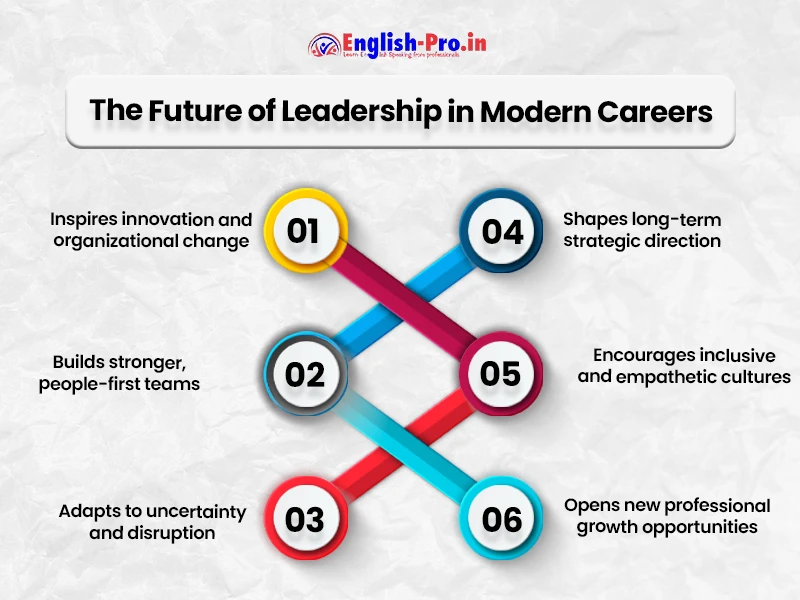
Table of Contents
ToggleIntroduction
Leadership goes beyond the process of team management or task delegation. It is undeniably the process of making a difference, motivating development, and, of course, dealing with any obstacles to success. Generally, the Types of Leadership Styles that change your career are one of the most important steps in this process. Eventually, it is very important to learn these styles to gain momentum in their career. The right leadership strategy can change the path of your career, increase your influence, and influence the culture around you.
In this article, not only are you going to learn what types of leadership styles are there, but you will also know how each can directly impact your success. You will be able to leave behind useful lessons on how to find your own style, how to adapt to different situations, and how to open new possibilities in your professional life.
In case you wish to enhance the quality of your personal skills along with the leadership skills, you might want to take a Personality Development Course in Chandigarh to improve your overall persona.
Why Leadership Styles Matter
Moreover, there is no universal concept of leadership. Adaptive, empathetic, and innovative leaders will be surely treasured in organizations in the next few years. Eventually, effective leadership, inspiration, and collaboration are directly related to your career development.
Through this, you will explore the biggest 4 types of leadership styles with examples.
Knowing what are the different types of leadership styles, you can:
- Determine at this point what strategy fits your personality and strengths.
- Undoubtedly, one understands when a particular style would work best.
- Further, improve the performance of the team.
- However, establish a reputation as a visionary leader.
And to people who want to be better communicators, which is the key to effective leadership, you can read how you can improve your communication skills in English.
The sections below describe the types of Leadership Styles That Change Your Career, providing examples, tips, practical hints, and future visions. Additionally, you will discover what are the different types of leadership styles through it.

Transformational Leadership: Inspiring Change
Moreover, transformational leaders are visionaries and motivate their teams to do more than is expected. They are also not focused on innovation, growth, and personal development, as traditional managers are.
Characteristics:
- Foster innovation and risk-taking.
- Create high aspirations and encourage motivation.
- Coach and give feedback periodically.
Example in Action
A tech startup product manager encourages his or her team to create the latest AI feature. The leader ensures ownership and innovation by making the project resonate with the individual goals of team members.
Impact on Career
If you question what are the types of leadership styles for transforming your career the best? This style will put you on the path of becoming a change-maker, which will also take you to executive positions or high-impact projects. To further increase your influence, you can learn more about personality developmentand its outlook in human life, which can help you improve at inspiring and motivating others.
Understand how great leaders think act and inspire transformation
Servant Leadership: Prioritizing People
Servant leaders are concerned with the development and certainly the welfare of their staff. In their opinion, they help others, and only then is organizational success guaranteed.
Key Traits
- Listening and emotional intelligence.
- Dedication to building skills in others.
- Humility and collaboration.
Numerical Insight
- 87 percent of the workers really indicated that their job satisfaction increased when there was servant leadership.
- 65 percent of high-performing teams surely have leaders who are people-first oriented.
Example in Action
The leader of a department in a healthcare organization motivates the members of the team to become certified and provides flexible working hours to enable them to develop personally.
Career Impact
Servant leaders who have mastered the technique are known to have developed loyal teams and future leaders. The style may create HR leadership, organizational development, and senior management positions. You can also develop attributes such as agreeableness, which will make your leadership service more effective.
Uncover the traits that make leaders stand out from the crowd
Adaptive Leadership: Navigating Uncertainty
Adaptive leadership is concerned with flourishing in change and leading teams through uncertainty. It is most especially useful in rapidly changing industries where it seems like it is always disrupted.
Core Principles:
- Promote trial and error.
- Allow teams to make decisions.
- Keep your head when things are unpredictable.
Example in Action:
When a significant shift in the market occurs, a sales director is able to reorganize the work of the team quickly, giving directions but leaving freedom. The group becomes flexible and does not lose performance.
Why It Matters:
Knowing what types of leadership styles are there in uncertain settings is the key to a career that will stand the test of time. Strategies, such as how to develop self-discipline, can help leaders become better at self-regulation and staying focused.
Strategic Leadership: Thinking Ahead
Strategic leaders actively emphasize vision; moreover, they consistently make decisions and therefore align actions with organizational objectives. Furthermore, they are analytical thinkers who are forward-looking.
Key Features:
- Anticipate industry trends.
- Make data-driven decisions
- Mentor teams on strategy thinking.
Example in Action:
A finance manager forecasts changes in the international markets and changes investment strategies to suit the fund, and trains junior analysts on how to make strategic decisions without a doubt.
Career Impact:
By mastering this leadership, individuals progress quickly; therefore, they often advance faster to executive roles like Chief Strategy Officer. Moreover, an opportunity to build efficient communication and word choice skills (Mind Your Words) contributes to the efficient implementation of strategic decisions.
What are the Types of Leadership Styles Emerging in 2025 and Beyond?
New leadership paradigms are defining the future of work as workplaces change:
- Digital Leadership: Leaders who can adopt technology and bring digital change to their organization, and make sure their staff remains competitive in an AI-first world.
- Inclusive Leadership: Leaders who embrace diversity, equity, and belonging through action, building workplaces that recognize all voices.
- Eco-Leadership: Leaders who incorporate sustainability strategy, who strike a balance between business growth and environmental responsibility.
- Adaptive Leadership: Leaders who are adaptable when faced with uncertainty and who help a team to quickly adjust and seek solutions in a changing situation.
- Servant Leadership: Leaders whose priority is people, giving teams the chance to develop, create, and do their best.
- Agile Leadership: Leaders who promote speed of experimentation, teamwork, and constant change to be ahead of the change.
- Empathetic Leadership: Leaders who use emotional intelligence to engage their teams on a more personal level and enhance their morale and trust.
To implement the action strategies to reward and motivate teams, visit A Rewarding Strategy.
Firms embrace employee expectations, and consequently, they improve accountability while also strengthening corporate responsibility.
Practical Steps to Identify Your Leadership Style
Self-knowledge of your style is the key to becoming a professional.
Here’s a simple framework:
- Self-assessment: Strengths, values, and driving forces.
- Seek Feedback: Seek feedback on work, activities, and projects.
- Experiment: In different situations, apply different leadership styles.
- Reflect and Adjust: Continue improving your style on results as you continue to get on.
- Learn Everyday/Continually: Learn the latest trends in leadership, read, and train to keep adding to your toolkit.
- Mentor and Be Mentored: You share knowledge freely, and therefore you gain insights, and moreover you receive help consistently.
When you do these things, you can use different types of leadership styles to build a career that fits your strategies. These steps can be supported with the help of courses, such as the Personality Development Course in Chandigarh.

Types of Leadership Styles in Action
- Transformational: personal development and creative thinking are charged.
- Servant: The one concerned with the well-being and prosperity of the individual team.
- Adaptive: The change and the uncertainty are welcome.
- Strategic: matches long-term vision with action.
- New emergent Styles: Include green, digital, and leadership.
With this strategy, you will have the opportunity to experiment with hybrid styles
that fit your team and organizational situation. These skills should be supplemented with other
personal growth content, such as Improve Your Communication Skills in English, to be most effective.

Sukhamrit Kaur
Sukhamrit Kaur is an SEO writer who loves simplifying complex topics. She has helped companies like Data World, DataCamp, and Rask AI create engaging and informative content for their audiences. You can connect with her on LinkedIn.



